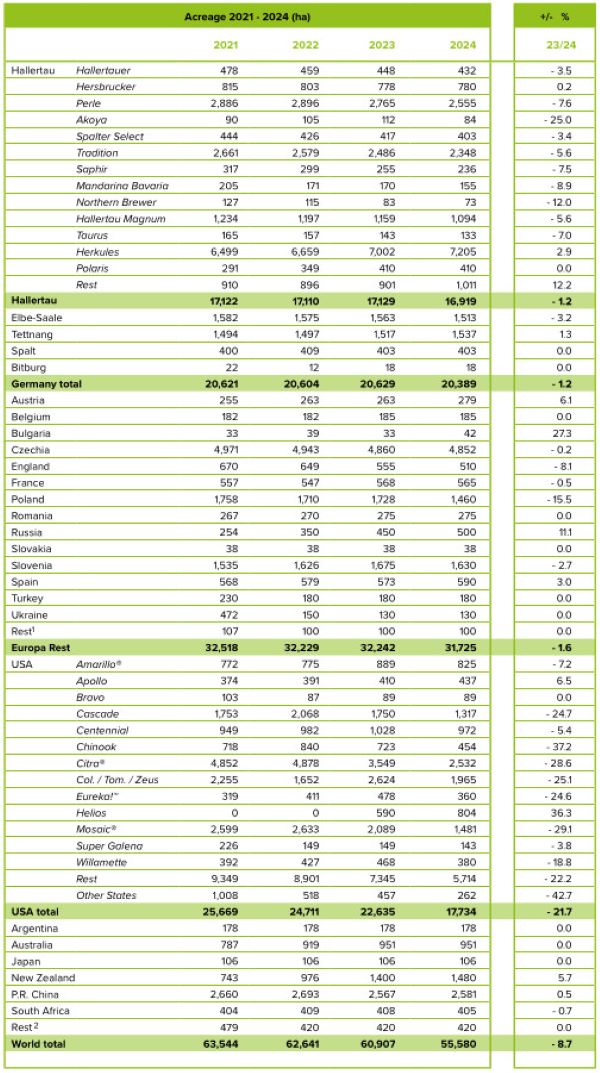Farmers in the American Northwest will reduce hop acreage by 20.5 percent, according to estimates global hop merchant Hopsteiner has shared. This isn’t exactly a surprise. In January, John I. Haas CEO Tom Davis said 10,000 acres of aroma hops needed to be eliminated.
That’s pretty much what seems to be happening. This estimate forecasts that overall 11,163 fewer acres will be harvested. It includes a significant reduction of CTZ, which is valued for its alpha, totaling about 1,627 acres. However, Hopsteiner is adding to Helios acreage and in this estimate acreage for HBC 682, another popular alpha hop, is grouped with “the rest.” As are popular aroma varieties such as Simcoe, El Dorado, Strata, and Idaho 7.
The USDA will issue its forecast in a few weeks, based on reports from growers in Washington, Idaho and Oregon. If it is close to this estimate of 43,155 acres, then farmers will harvest about the same number of acres as 2015, or 29 percent of peak acreage in 2021.
More takeaways after the chart. Acreage is listed in hectares. One hectare is equivalent to 2.47 acres.

– Not surprisingly, Citra and Mosaic production has been slashed the most, because they occupy the most aroma acres. Citra acreage is down 48 percent from its 2022 peak and Mosaic 44 percent since 2022.
– Several years ago, Citra surpassed Saaz as the world’s most popular aroma hop. Saaz could reclaim the crown this year. In 2023, farmers in Czechia harvested 5,331 metric tons of Saaz and American farmers 6,137 of Citra. However, if farmers do reduce Citra acreage by almost 29 percent, and their average yield is the same as 2023 they will produce fewer than 4,500 metric tons in 2024.
Saaz acreage varies little from one year to the next, but production can swing wildly. In 2021, growers had the best harvest in 25 years, yielding 6,633 metric tons. The next year was a disaster, resulting in 3,127 tons. Last year was more typical, 5,331 tons.
– Yesterday, I mentioned I wrote about 20th century “C hops” for the Craft Beer & Brewing IPA issue hitting mailboxes this week. The estimate is that farmers will harvest 25 percent less Cascade, 5 percent less Centennial, and 37 percent less Chinook. Ouch. Double ouch in the case of Chinook, which was the star of the story.
– Although acreage may be much the same as 2015, the mix is not. In 2015, farmers strung 6,790 acres of Cascade and 4,471 of Centennial. They harvested 4,013 acres of Citra and 1,600 of Mosaic. Even after two years of reduction, Citra acreage has increased more than 50 percent and Mosaic has more than doubled.
Thank you for the tremendously important information. Cheers!!